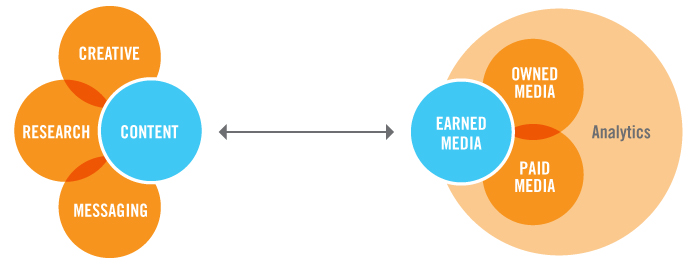Owned, paid and earned media: These are terms that marketing professionals are privy to; however, this siloed approach to media is no longer the norm. Traditionally you think of owned media as your company’s website; paid media as buying digital ad space or a 30-second spot on network TV; and earned media as coverage on a well-known news site. However, the lines become blurred as media consumption evolves and people constantly digest information.

There is consumer engagement 24-hours a day, seven days a week, 365 days a year. Conversations never stop, so brands shouldn’t either. The idea of stopping at paid media and expecting people to react and carry on the conversation is not practical. It’s up to the brands to continue the engagement. In other words, there shouldn’t be a stopping point, and that’s where the lines are blurred between paid, owned, and earned media.
For example, a brand may run an ad on network cable, at the same time there may be a related article about the brand on The New York Times website, which then drives readers to the company’s blog/website, which then features a feed of the conversations between the brand and consumers on their Twitter page, which encourages the visitor to join in on the conversation. This scenario is not out of the ordinary — and it’s a great example of how paid and owned media easily transition into earned media.
So, where does this leave marketers? Essentially, the overall goal is to connect all of these sources into a meaningful campaign that drives brand awareness and increases sales (or whatever your objective may be). Because paid, owned and earned media act together as an avenue to achieve your objective, we need to stop viewing these channels as singular pieces of a campaign and think about them like consumers do — as one. At the end of the day, people don’t think about how the commercial they’re watching connects to a trending hashtag and an article on their favorite news site, so it’s time we all start thinking in terms of overall engagement strategies.